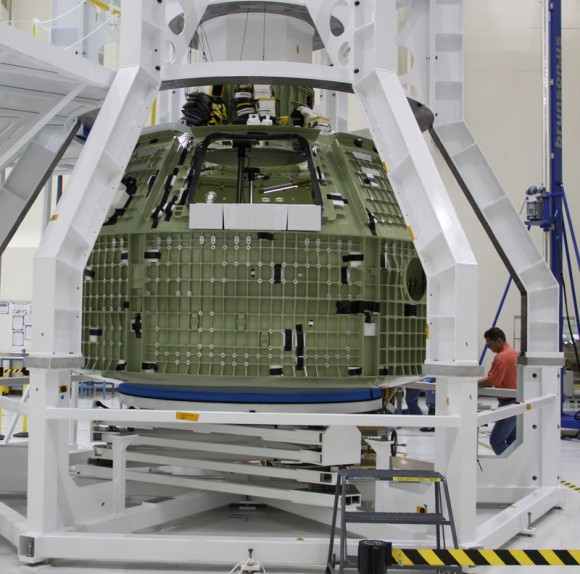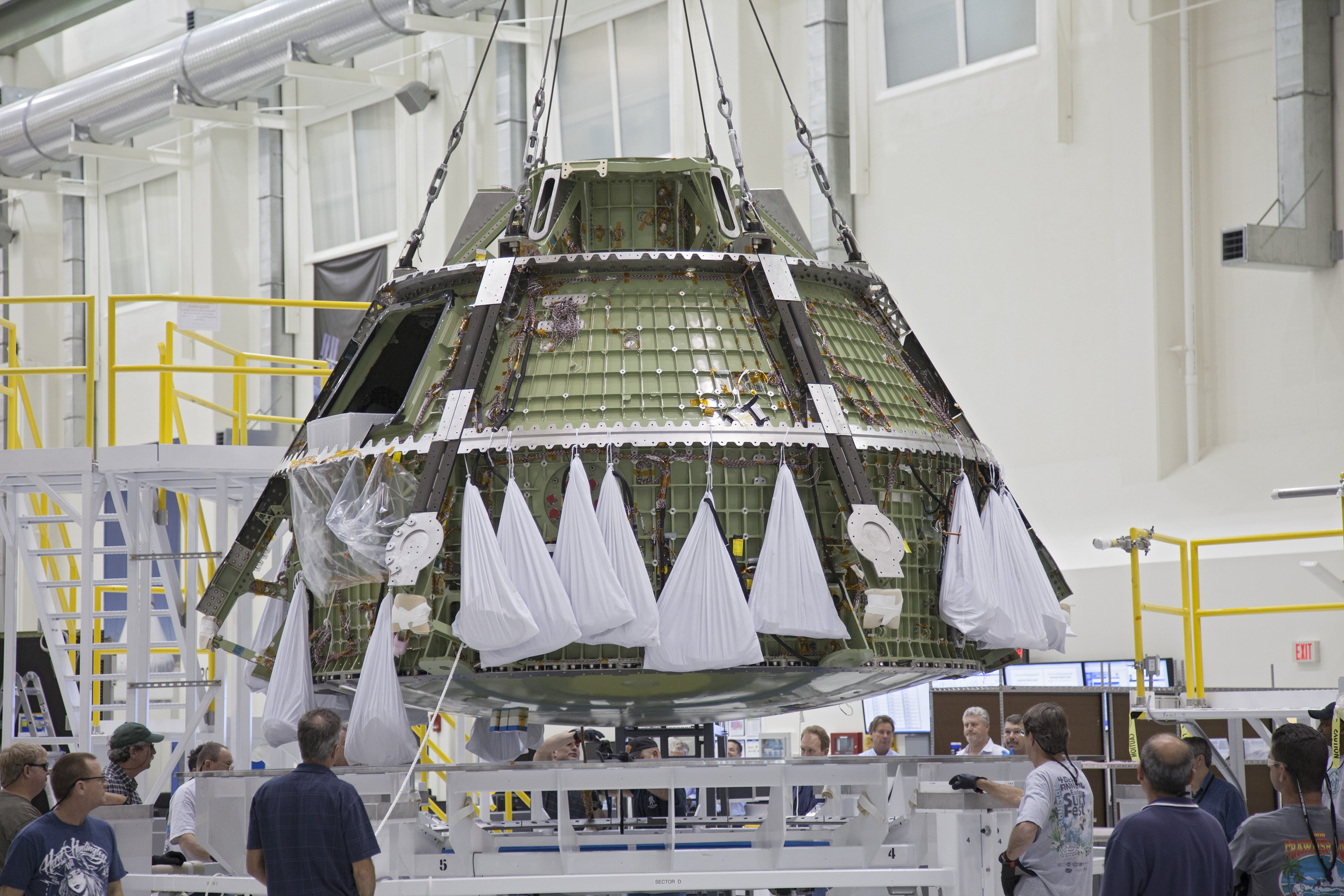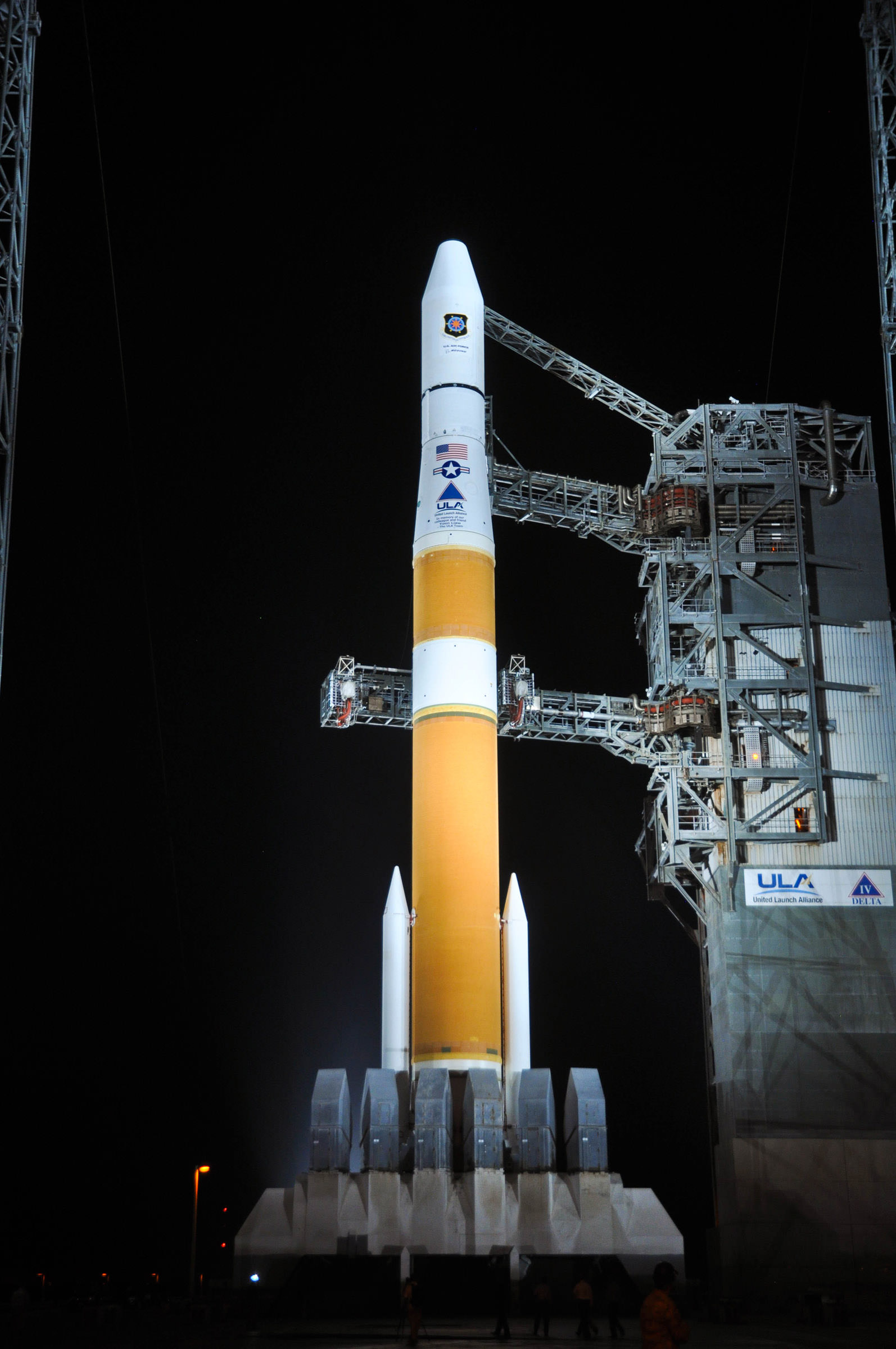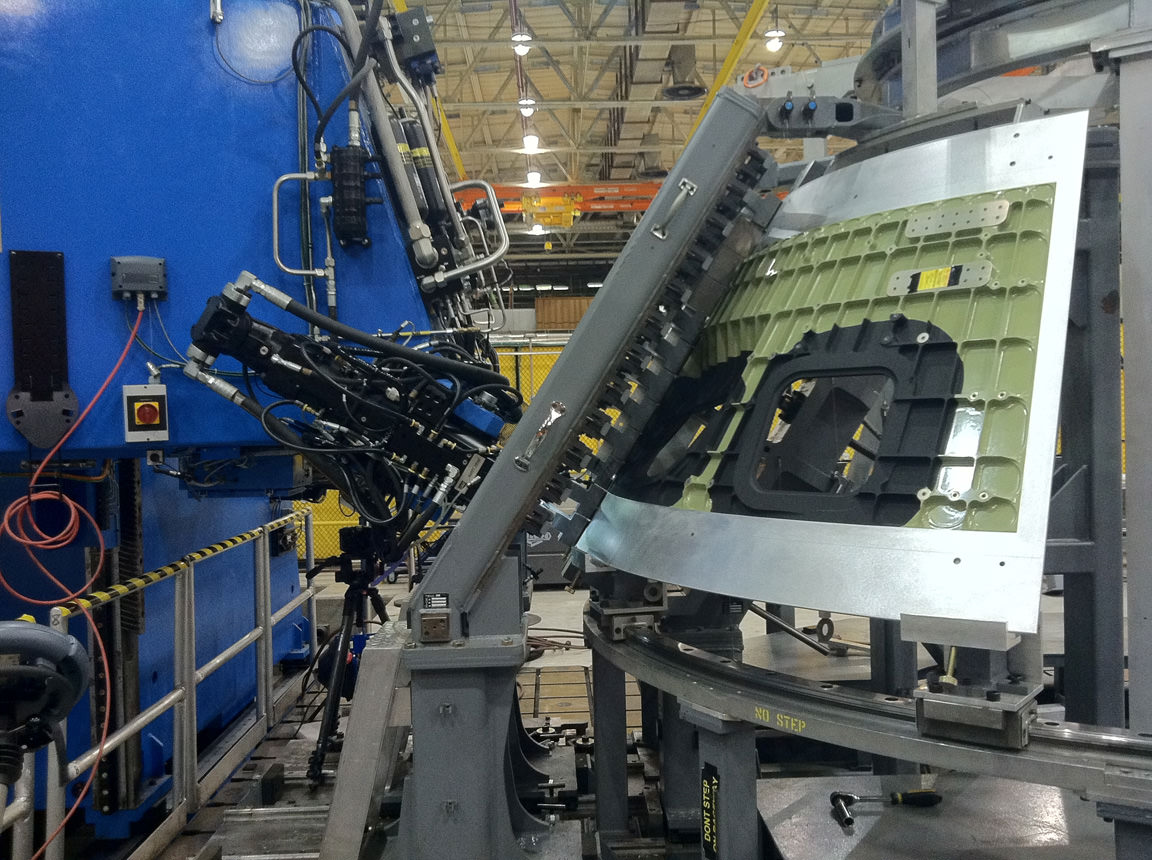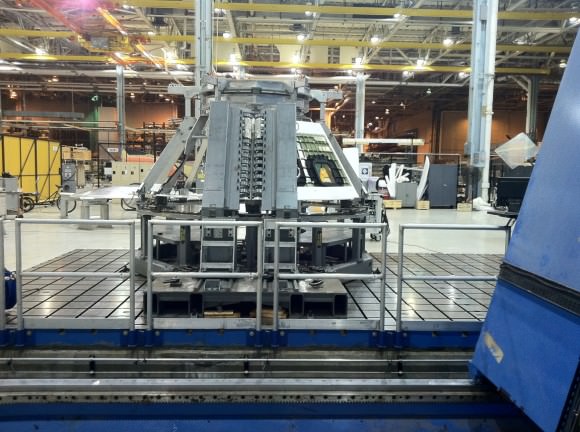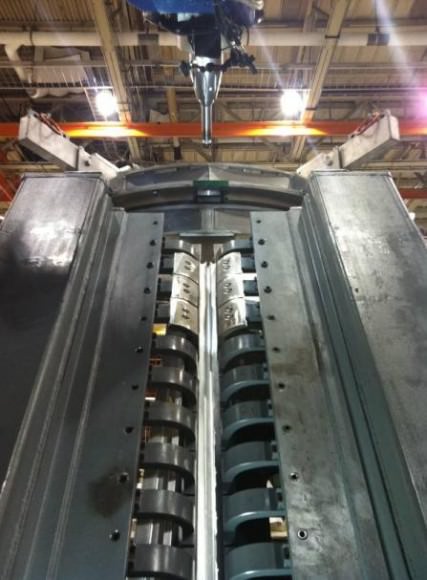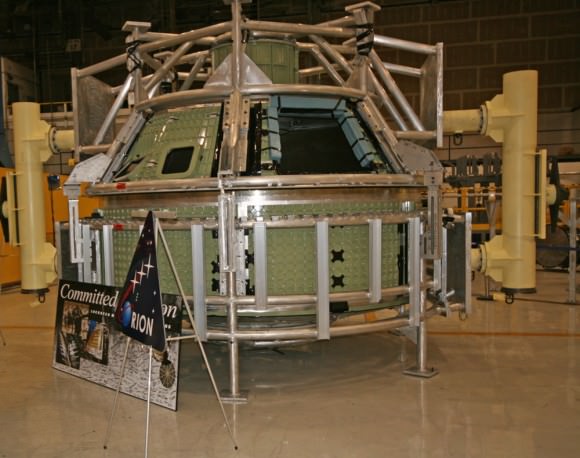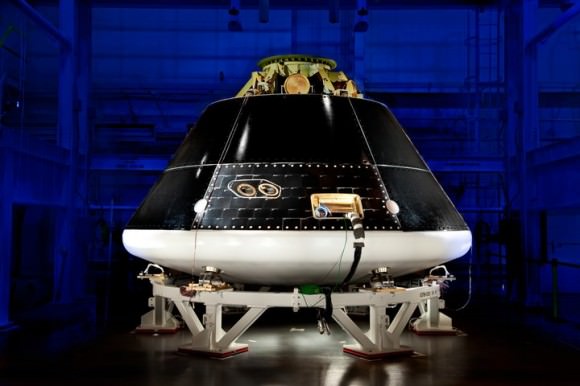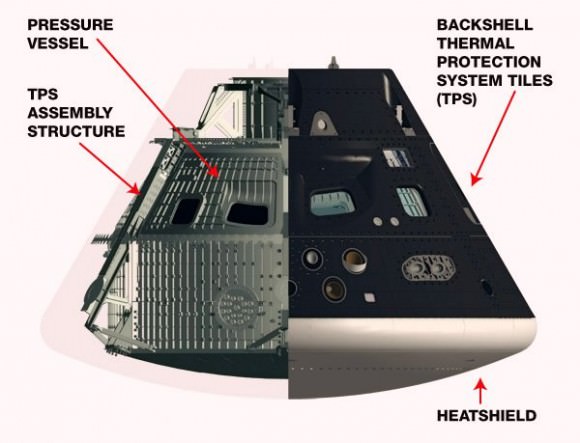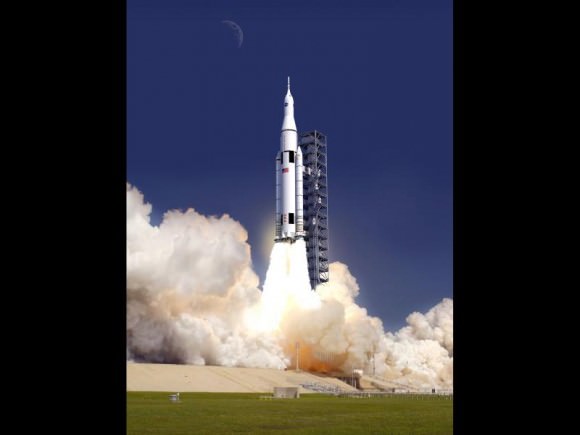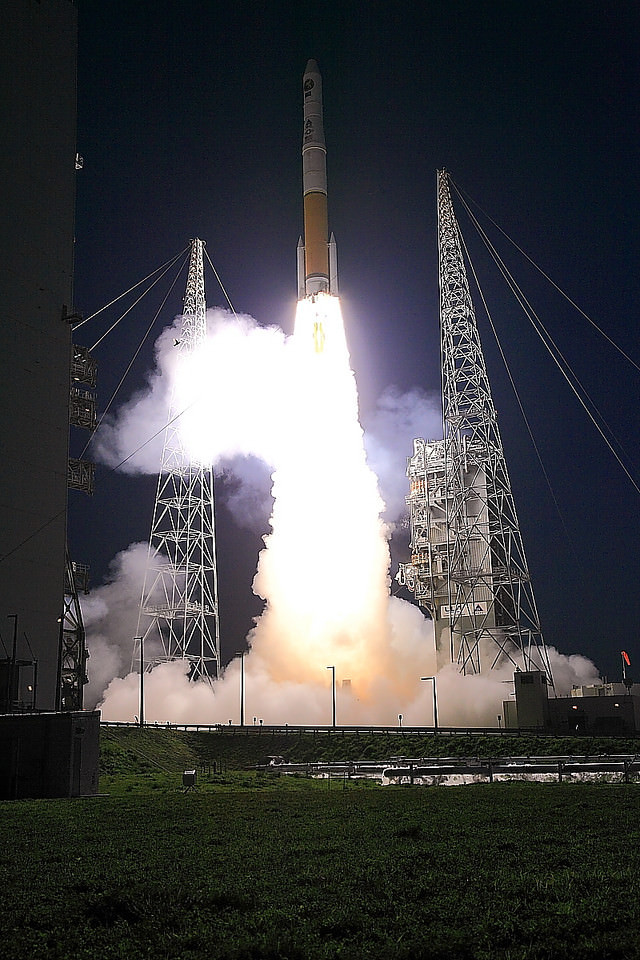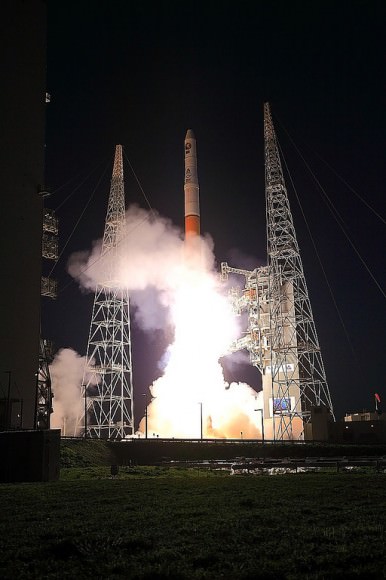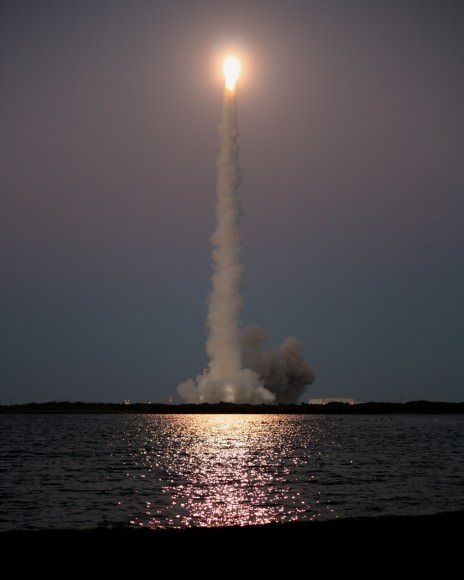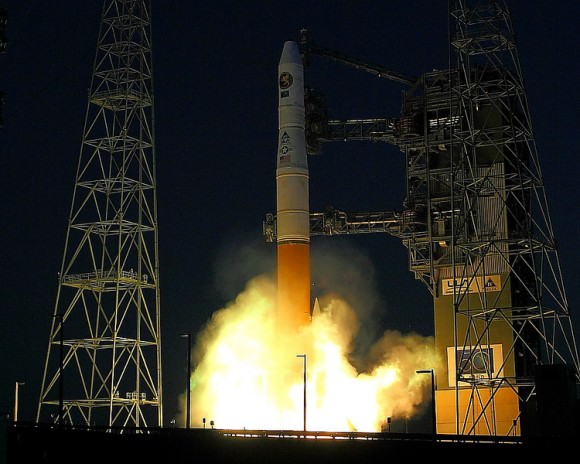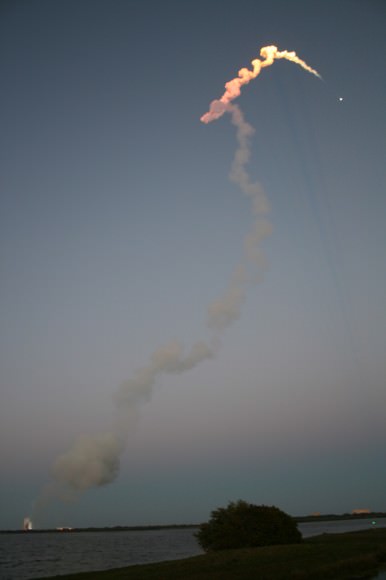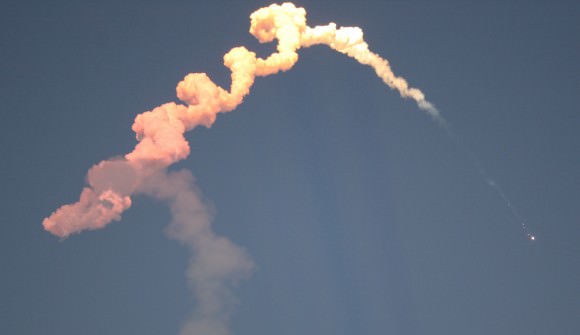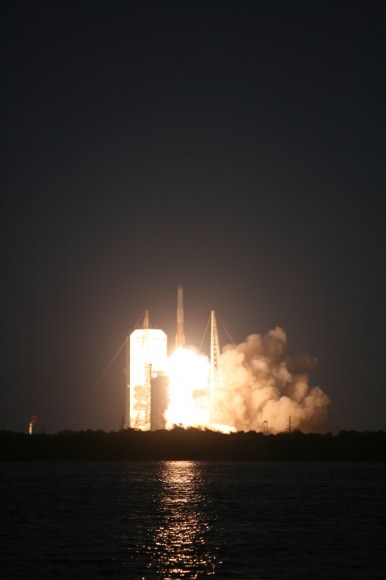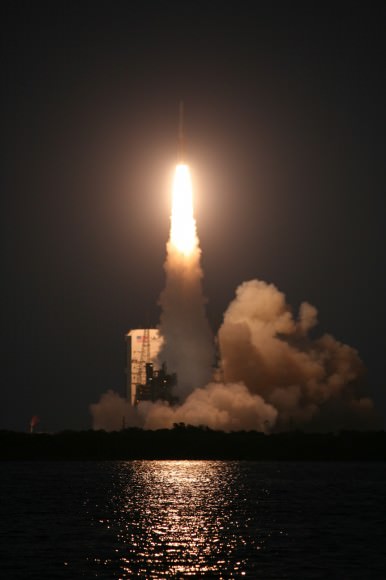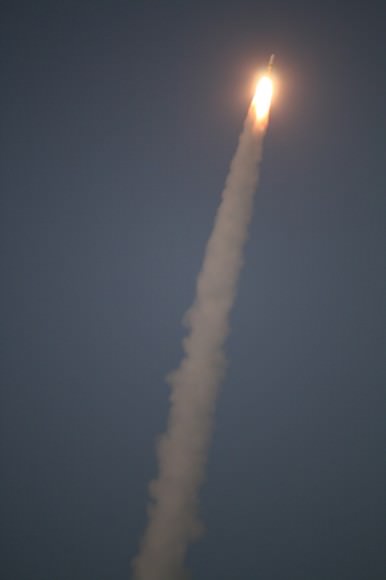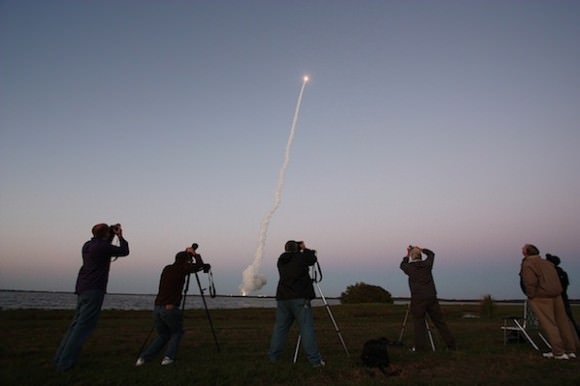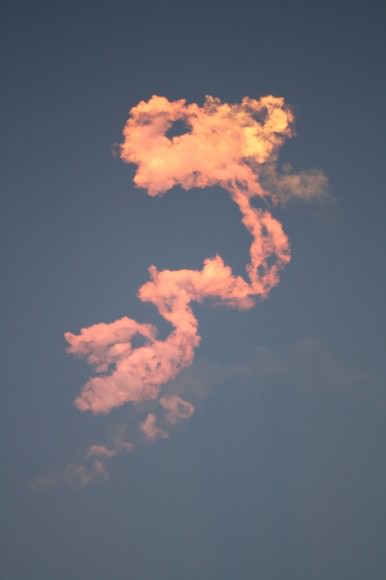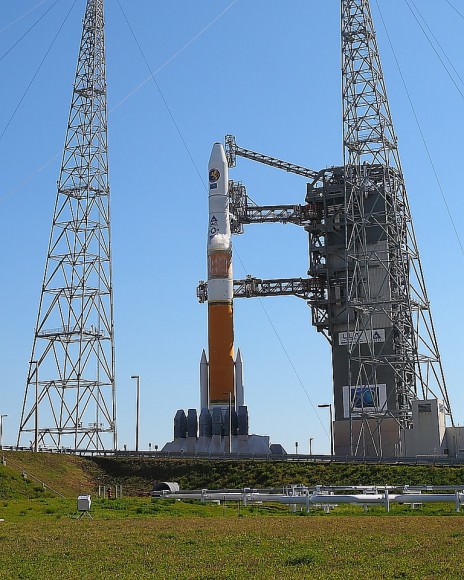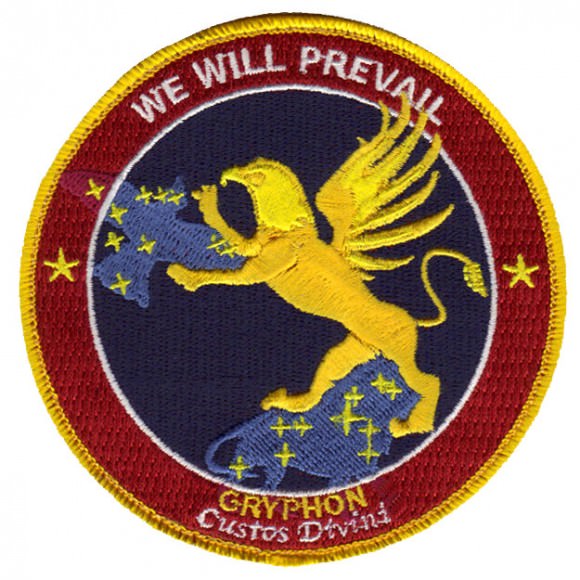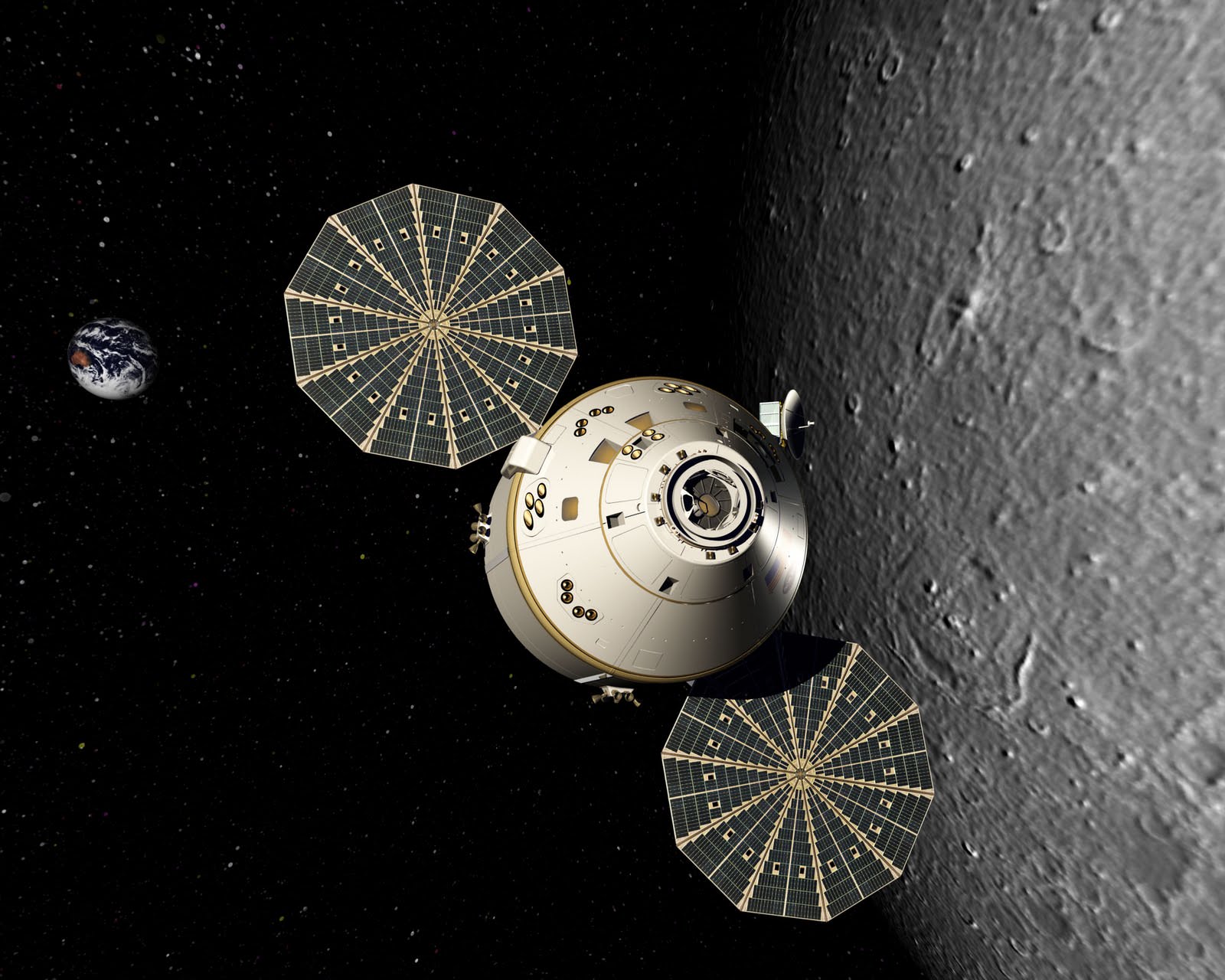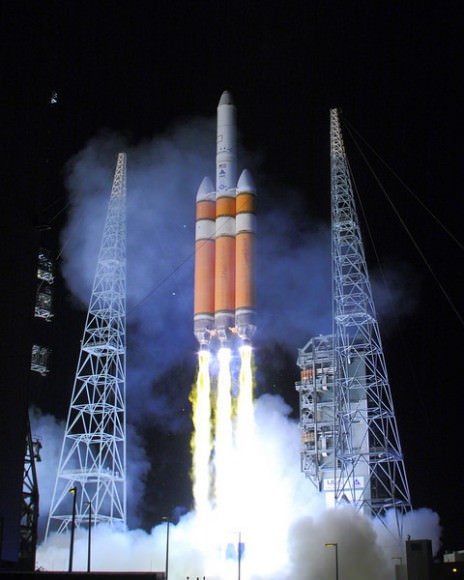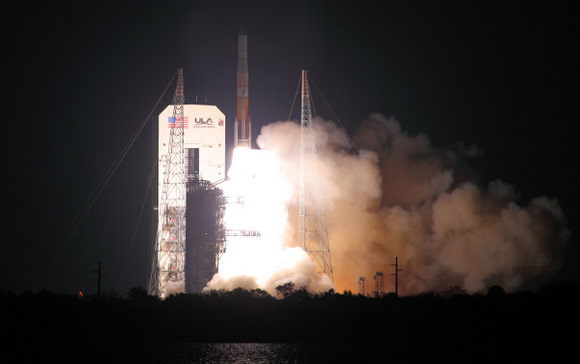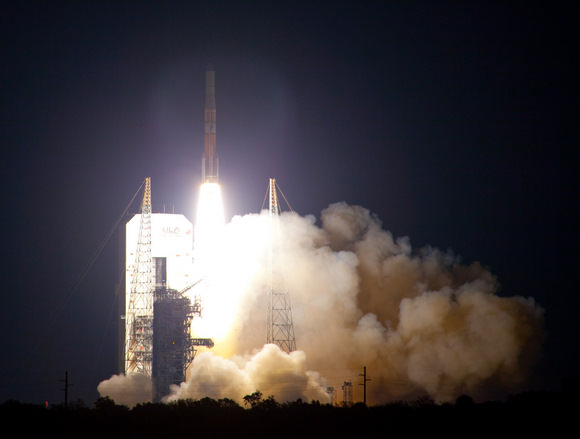NASA is picking up the construction pace on the inaugural space-bound Orion crew capsule at the Kennedy Space Center (KSC) in Florida – and accelerating towards blastoff on the unmanned Exploration Flight Test-1 mission (EFT-1) slated for September 2014 atop a mammoth Delta 4 Heavy Booster which will one day lead to deep space human forays to Asteroids and Mars.
Orion was at the center of an impressive and loud beehive of action packed assembly activities by technicians during my recent exclusive tour of the spacecraft to inspect ongoing progress inside the renovated Orion manufacturing assembly facility in the Operations and Checkout Building (O & C) at KSC.
“We plan to power up Orion for the first time this summer,” said Scott Wilson in an exclusive interview with Universe Today beside the Orion vehicle. Wilson is Orion’s Production Operations manager for NASA at KSC.
The Orion EFT-1 flight is a critical first step towards achieving NASA’s new goal of capturing and retrieving a Near Earth Asteroid for eventual visit by astronauts flying aboard an Orion vehicle by 2021 – if NASA’s budget request is approved.
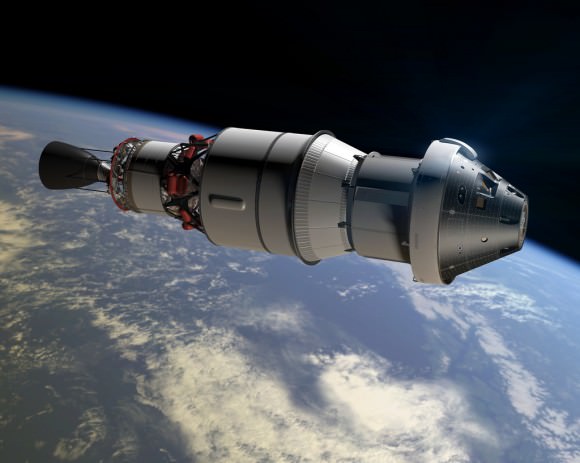
KSC will have a leading role in NASA’s asteroid retrieval project that could occur some four years earlier than President Obama’s targeted goal of 2025 for a human journey to an asteroid.
Capturing an asteroid and dispatching astronauts aboard Orion to collect precious rock samples will aid our scientific understanding of the formation of the Solar System as well as bolster Planetary Defense strategies – the importance of which is gathering steam following the unforeseen Russian meteor strike in February which injured over 1200 people and damaged over 3000 buildings.
Dozens of highly skilled workers were busily cutting metal, drilling holes, bolting screws and attaching a wide range of mechanical and electrical components and bracketry to the Orion pressure vessel’s primary structure as Universe Today conducted a walk around of the EFT-1 capsule, Service Module and assorted assembly gear inside the O&C.
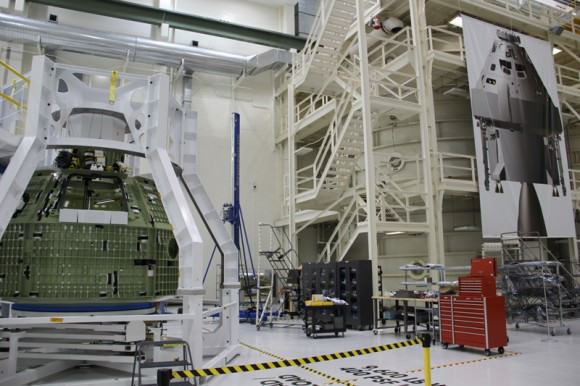
Lockheed Martin is the primary contractor for Orion. A growing number of employees hired by Lockheed and United Space Alliance (USA) are “working 2 shifts per day 7 days a week to complete the assembly work by year’s end,” said Jules Schneider, Orion Project manager for Lockheed Martin at KSC, during an exclusive interview with Universe Today.
I watched as the workers were boring hundreds of precision holes and carefully tightening the high strength steel bolts to attach the top to bottom ring segments made of titanium to the main load paths on the pressure vessel.
“We are installing lots of wiring to support ground test instrumentation for the strain gauges as well as microphones and accelerometers.”
“The simulated back shell panels are being installed now as guides,” said Wilson. “The real back shell panels and heat shield will be installed onto the structure later this year.”
“The heat shield is the biggest one ever built, 5 meters in diameter. Its bigger than Apollo and Mars Science Lab. It varies in thickness from about 1 to 3 inches depending on the expected heating.”
“We are making good progress on the Orion Service module too. The outer panels will be installed soon,” Wilson explained.
The olive green colored crew module was clamped inside the birdcage-like Structural Assembly Jig during my visit. The Jig has multiple degrees of freedom to maneuver the capsule and more easily enable the detailed assembly work.
“The technicians are installing strain gauges and secondary structure components to get it ready for the upcoming structural loads test,” said Schneider.
“After that we need to finish installing all the remaining parts of the primary structure and a significant portion of the secondary structure.”
For the next stage of processing, the EFT-1 crew module has been lifted out of the birdcage Jig and moved onto an adjacent dedicated work station for loads testing at the Operations and Checkout building.
As reported in my earlier article the Orion pressure vessel sustained three ‘hairline” cracks in the lower half of the aft bulkhead during proof pressure testing of the vessel and welds at the O & C.
I was observing as the technicians were carefully milling out the miniscule bulkhead fractures.
Workers have now installed custom built replacement brackets and reinforcing doublers on the aft bulkhead.
“We will do the protocol loads test with pressure using about 9 different load cases the vehicle will see during the EFT-1 flight. Chute deployment and jettison motor deployment is a driving load case,” said Schneider.
“We will also squeeze the capsule,” said Wilson.
“That structural loads testing of the integrated structure will take about 6 to 8 weeks. There are thousands of gauges on the vehicle to collect data,” Schneider elaborated.
“The test data will be compared to the analytical modeling to see where we are at and how well it matched the predictions – it’s like acceptance testing.”
“After we finish the structural loads tests we can than start the assembly and integration of all the other subsystems.”
“When we are done with the ground testing program then we remove all the ground test instrumentation and start installing all the actual flight systems including harnesses and instrumentation, the plumbing and everything else,” Schneider explained.
Orion hardware built by contractors and subcontractors from virtually every state all across the U.S is being delivered to KSC for installation onto EFT-1. Orion is a nationwide human spaceflight project.
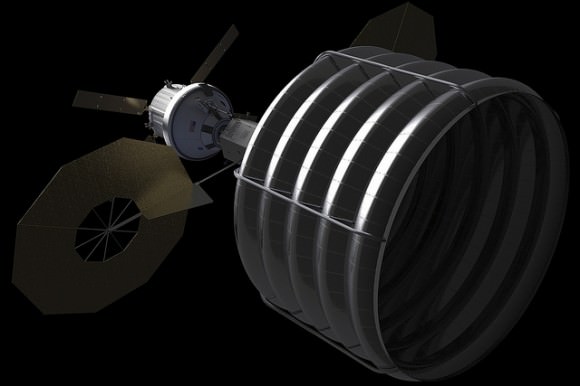
During the unmanned Orion EFT-1 mission, the capsule will fly on a two orbit test flight to an altitude of 3,600 miles above Earth’s surface, farther than any human spacecraft has gone in 40 years.
It will then fire braking rockets to plunge back to Earth, re-enter the atmosphere at about 20,000 MPH and test numerous spacecrafts systems, the heat shield and all three parachutes for an ocean splashdown.
Meanwhile other Orion EFT-1 components such as the emergency Launch Abort System (LAS) and Service Module are coming together – read my Orion follow-up reports.
Humans have not ventured beyond low Earth orbit since the Apollo Moon landings ended in 1972. Orion will change that.
…………….
Learn more about Orion, Antares, SpaceX, Curiosity and NASA robotic and human spaceflight missions at Ken’s upcoming lecture presentations:
April 20/21 : “Curiosity and the Search for Life on Mars – (in 3-D)”. Plus “The Space Shuttle Finale and the Future of NASA – Orion, SpaceX, Antares and more!” NEAF Astronomy Forum, Rockland Community College, Suffern, NY. 3-4 PM Sat & Sunday. Display table all day.
April 28: “Curiosity and the Search for Life on Mars – (in 3-D)”. Plus the Space Shuttle, SpaceX, Antares, Orion and more. Washington Crossing State Park, Titusville, NJ, 130 PM
